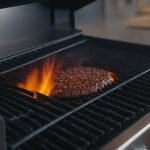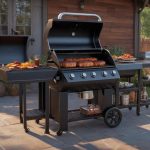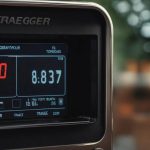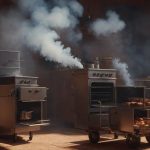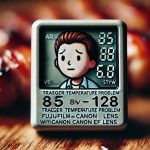- The Traeger may not heat up due to various reasons.
- Ensure the Traeger is plugged in and receiving sufficient power.
- If the Traeger heats up to 225-250°F but won’t go above 300°F, there may be an issue.
- Problems could stem from the RTD Probe, Auger Fan, or external factors like wind or wet pellets.
- If the Traeger can reach other temperatures but not 450°F, external conditions are likely the cause.
- Systematically check each part of the Traeger if the desired temperature still can’t be reached.
Contents
Traeger Grill Not Heating Up?
If your Traeger grill isn’t heating up properly, there are several common issues to check and fix. Here’s a detailed guide to diagnosing and resolving these problems:
| Problem | Possible Causes | Solutions |
| Hot Rod Deterioration | Over time, the hot rod can deteriorate, causing ignition issues. | Inspect and replace the hot rod if necessary. Traeger replacement parts. |
| Low-Quality Pellets | Inferior pellets produce less heat and more ash, clogging the firepot. | Use high-quality Traeger-approved pellets. Store them in a dry place to prevent moisture. |
| Not Enough Pellets in the Grill | Insufficient pellets in the hopper or auger jams. | Ensure the hopper is filled with pellets and the auger is not jammed. |
| Blown Fuses | Electrical issues such as blown fuses can disrupt heating. | Check and replace any blown fuses in the grill’s electrical system. |
| Too Much Debris in the Firepot | A build-up of ash and debris can block airflow. | Regularly clean the firepot to ensure proper airflow. |
| Moisture in the Grill | Wet pellets or moisture inside the grill can prevent proper ignition. | Keep pellets dry and ensure the grill is stored in a dry environment. |
| Broken Induction Fan | The induction fan may be malfunctioning, affecting temperature control. | Inspect the fan and replace it if it’s not working properly. |
Additional tips to ensure your Traeger grill heats up properly:
- Check the power supply: Ensure the grill is properly plugged in and receiving adequate power.
- RTD Probe: If the grill heats up but doesn’t reach high temperatures, the RTD (Resistance Temperature Detector) probe might be faulty and needs replacement.
- External Conditions: Wind or wet weather can impact heating. Try using the grill in a sheltered area.
- Chimney Cap: Ensure the chimney cap isn’t too tight, which can restrict airflow and affect heating.
By systematically checking these components and addressing any issues, you can ensure your Traeger grill operates efficiently.
Traeger Not Heating Up To 300°F?
If your Traeger grill isn’t heating up to 300°F, several factors could be at play. The most common culprits include:
| Cause | Solution | Details |
| RTD Probe Issues | Clean or Replace | Ensure the probe is clean and connected; replace if malfunctioning. |
| Auger Motor or Fan Malfunction | Inspect and Repair | Check for blockages or damage; ensure both components function correctly. |
| Pellet Quality | Use High-Quality Pellets | Store pellets in a dry place; use only premium, dry pellets. |
| Wind and Weather Conditions | Shelter the Grill | Position in a sheltered area; use a grill blanket in cold weather. |
| Chimney Cap Adjustment | Adjust Cap | Ensure proper airflow by setting the cap correctly. |
| Grease and Debris Build-Up | Regular Cleaning | Clean firepot and drip tray regularly to maintain airflow and heat distribution. |
Traeger Not Heating Up To 450°F?
If your Traeger isn’t heating up to 450°F, there are several potential reasons and troubleshooting steps to consider. Here’s a detailed guide to help you identify and fix the issue:
Inadequate Power Supply
Ensure your Traeger is plugged into a reliable power source.
A fluctuating or insufficient power supply can impede the grill’s ability to reach high temperatures.
Faulty Temperature Probe
Check the RTD (Resistance Temperature Detector) probe. A malfunctioning or dirty probe can give inaccurate temperature readings, causing the grill to underperform.
Clean or replace the probe if necessary.
Pellet Quality
Using low-quality or damp wood pellets can significantly affect the grill’s heating capability.
Always use fresh, high-quality pellets stored in a dry place to maintain their efficacy.
External Conditions
Wind and cold weather can hinder the grill’s performance. Try to position your Traeger in a sheltered location to minimize the impact of external conditions.
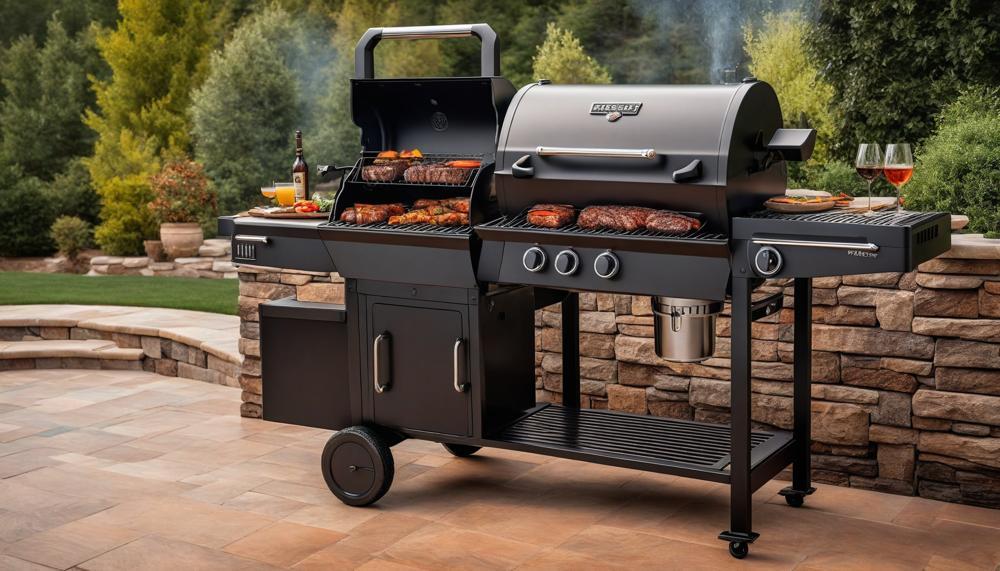
Lid Position
An improperly closed lid can cause heat loss. Ensure the lid is properly sealed. Some users have found that slightly propping open the lid (by about 1/2″) helps, but this can make the handle hot.
Alternatively, adjusting the lid hinge might be necessary.
Internal Components
Check the auger motor and fan. These components are essential for maintaining proper airflow and pellet feed.
If either is malfunctioning, the grill won’t reach the desired temperature.
Chimney Cap Position
Ensure the chimney cap is correctly positioned. An improperly set cap can disrupt airflow and temperature control.
Cleaning and Maintenance
Regularly clean your Traeger. Accumulated grease and ash can block airflow, leading to poor temperature regulation. A thorough cleaning can often resolve heating issues.
By systematically checking each of these areas, you can identify and resolve why your Traeger isn’t reaching 450°F.
Barbecue Tips and Guides – Kept Simple
| Tip | Action | Reason |
| Pellet Quality | Use high-quality pellets | Ensures consistent heat |
| Pellet Distribution | Evenly distribute pellets in the hopper | Prevents inconsistent feeding |
| Lid Management | Minimize lid openings | Retains heat |
| Air Circulation | Maintain proper space and avoid overcrowding | Ensures even heat distribution |
| Clearance | Keep space between pan, food, and grates | Prevents hot spots |
| Weather Conditions | Use grill cover or relocate | Protects from wind and rain |
| Regular Maintenance | Clean grill regularly | Prevents airflow obstruction |
| Temperature Probes | Check and calibrate RTD probe | Ensures accurate readings |
| Power Supply | Ensure adequate power | Affects grill performance |
| Mechanical Components | Inspect auger fan and motor | Ensures proper pellet feeding |
Conclusion
Dealing with a Traeger grill that won’t exceed 300 degrees can be frustrating, but understanding the underlying causes can help you get back to grilling perfection. Common issues include problems with the RTD probe, auger motor, fan, pellet quality, and external conditions like wind or moisture. Each component plays a crucial role in maintaining the desired temperature.
Start by checking the RTD probe for cleanliness and functionality, as it is essential for accurate temperature readings. Ensure the auger motor and fan are free of blockages and operating correctly to maintain proper pellet feed and airflow. Using high-quality, dry pellets is vital, as inferior pellets can produce less heat and more ash, clogging the system. External factors such as wind and wet weather can also impact performance; placing your grill in a sheltered area can help mitigate these effects. Additionally, regular cleaning of the firepot and drip tray is necessary to prevent airflow obstruction.
By systematically addressing these potential issues, you can restore your Traeger grill’s performance and enjoy consistent cooking temperatures.


